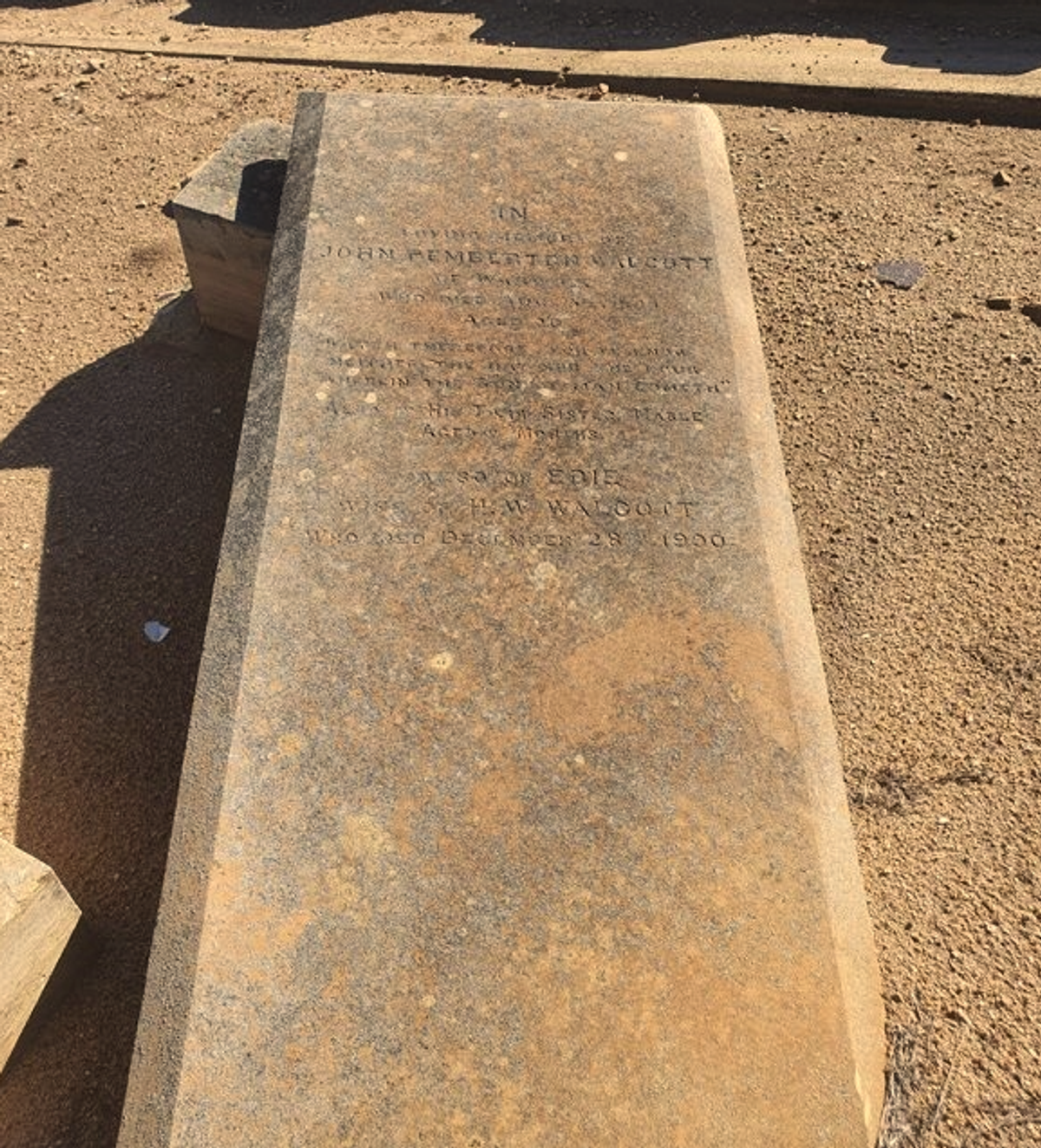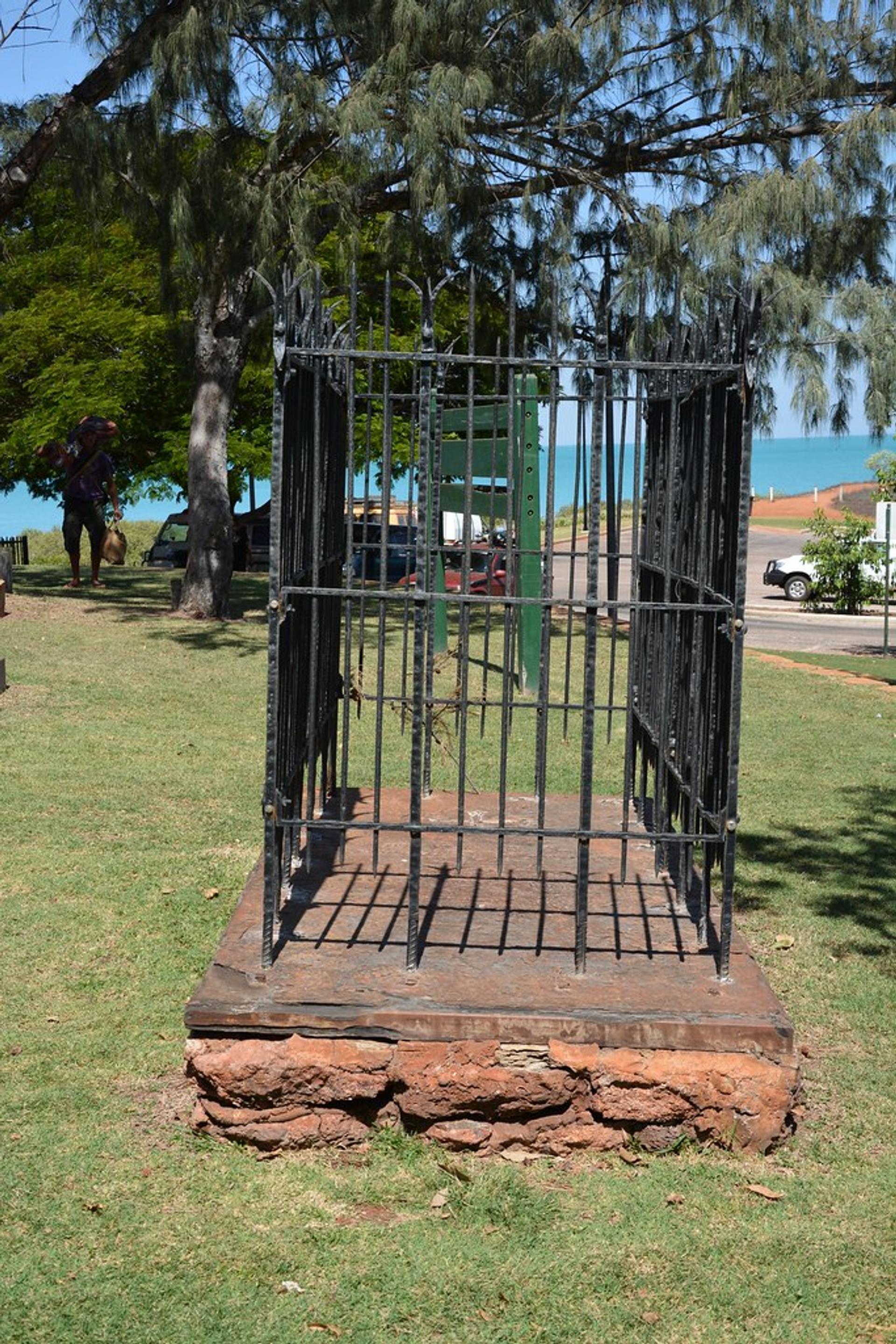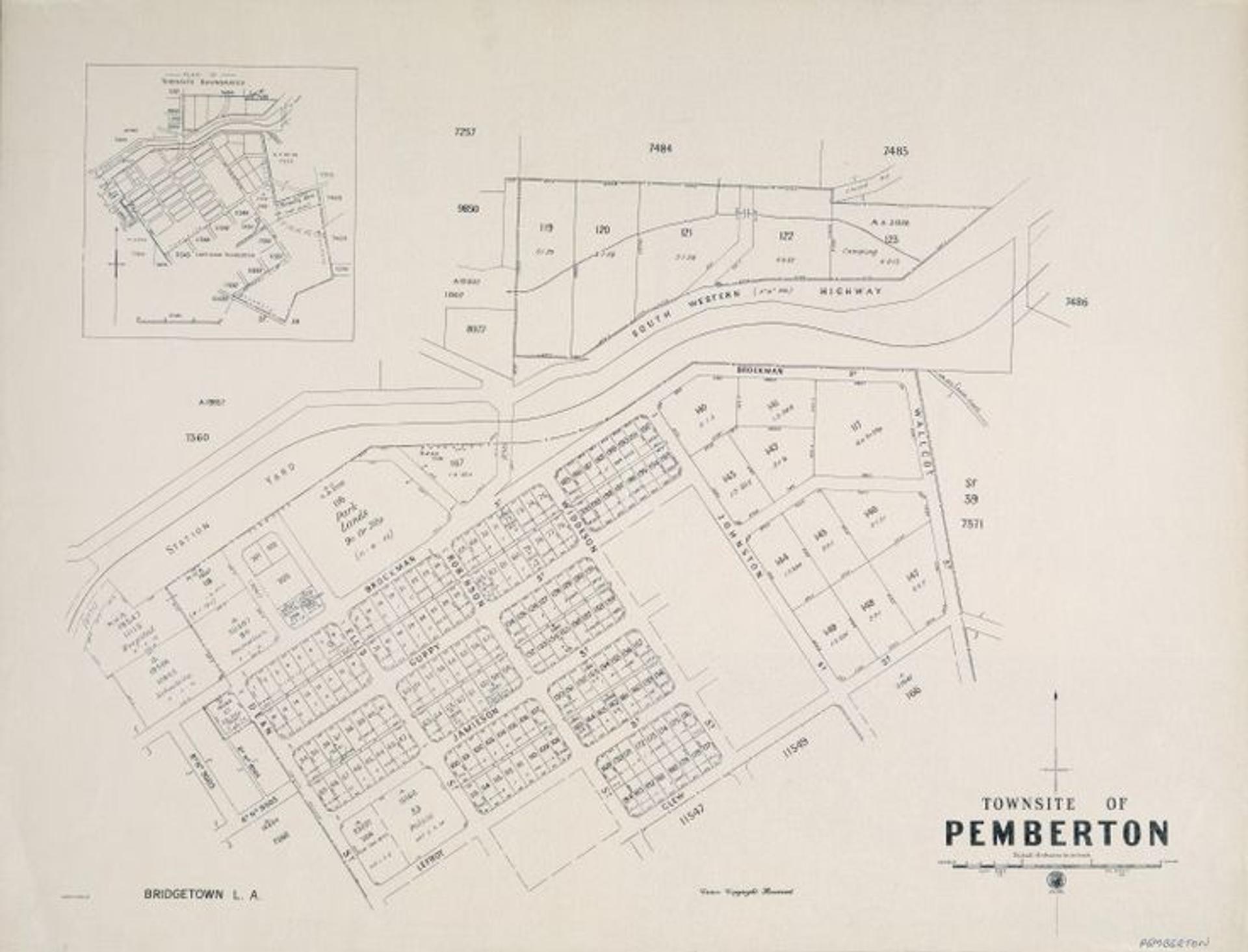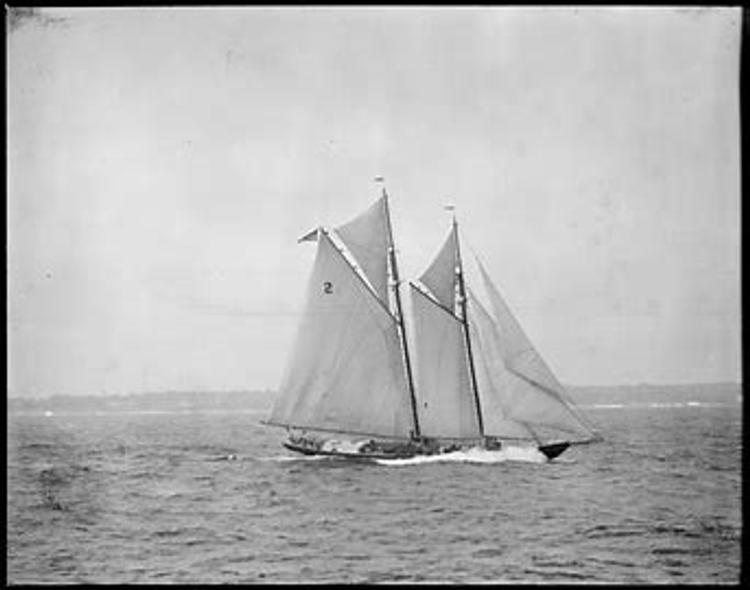Pemberton Walcott
Vessel Name: Gertrude
Pemberton Walcott
Died aboard his vessel, buried in Broome
14 July 1883




Pemberton Walcott was born on 6 May 1834 at Middle Swan and christened in Guildford on 19 August that year. He was the second youngest of nine children born to his mother Johanna Perry [born in Guyana] and Father James Percy Walcott [born in Barbados]. James and his brother John owned sugar plantations in Demerara and St Christopher, Guyana and used slaves to work the land and carry out the labour required to plant and harvest the sugar after slavery was abolished in 1833. The family moved to Britain in 1828 and to Western Australia in 1829 where they took up allotments of land on the Swan River, Avon Valley and York, becoming some of the earliest and wealthiest settlers of the colony.
Pemberton Walcott was a botanical collector and became noted when he travelled aboard the Dolphin to Nickol Bay with Francis T. Gregory in 1861. He collected almost 500 samples, finding specimens not previously known. His collection is stored in the Melbourne museum. Some new specimens are named after him. Walcott discovered banks of pearl shell in commercial quantities. Walcott charted the voyage, noting previously uncharted sections of the coast. The Walcott Inlet in the Kimberley is named after him.
The town of Pemberton was named after Walcott who had led an expedition to the area with his nephew Edward Reveley Brockman in 1858. Walcott discovered freshwater lamprey and large marron in the south west rivers and made public comments on these species.
Walcott took various community positions on committees and the like in the southwest of WA. He was the first farmer around the Warren River, establishing Karri Dale farm in 1862. He settled Dwalganup Station near Boyup Brook in 1868.
Karri Dale was sold in 1872. Walcott had travelled to the Northwest on J & W Bateman’s Flying Foam. He spent the next few years pearl shelling. In November 1876 he was master of the 29 ton pearling cutterWaterlily on the northwest coast.
Unlike his father and brother Robert, Pemberton Walcott was opposed to slavery and advocated against it. He defended Aboriginal rights for fair treatment, learned their languages and vehemently opposed blackbirding, which resulted in his friendship with many Aboriginal groups along the West Australian coast.
By 1878 Walcott was made Captain, and appointed to a newly created government position, Officer of the Boat Licensing Board. In 1879 he was appointed the government resident at Tien Tsin [now Cossack] and justice of the peace (JP). He was the Inspector of Pearl Shell Fisheries.
These roles involved upholding the law and presiding over court sittings and trials, sentencing where necessary. Walcott had diplomacy and tact and could often resolve issues without requiring external assistance.
Captain Walcott was provided with a revenue cutter. A revenue cutter was a boat employed by the government, predominantly for the pearling industry. Pearlers paid a levy [revenue or tax] to the government to maintain and cover the operating costs. Cutters were used because they were light and fast. They searched for missing vessels and wrecks, resupplied remote government outstations, and carried pearls and pearl shell south for sale. During the course of his duties, Captain Walcott charted new landing areas, safe anchorages and dangerous sections of the coastline in his first command of a revenue cutter, the Noah’s Ark, a 12-ton jarrah boat.
The pearlers objected strenuously to use of the revenue cutter diverted away from pearling because they were the only industry paying the revenue. When the cutter was directed elsewhere, delivery of the valuable pearl cargo was delayed, and so were the mails and supplies that were carried to the pearling settlements along the coast.
In 1876 Captain Walcott was dispatched to the search for the Stefano, an Austrian barque bound for Hong Kong that wrecked on the Northwest Cape. The schooner Victoria was chartered and placed under Walcott’s command. With the help of local natives, Walcott located the wreck near Pt Cloates. The statements of the two survivors from the Stefano were carried on the Rosette (the survivors were picked up by Captain Tuckey on the Jessy). Walcott later searched extensively for the Rosette when it went missing (see the story of the Rosette).
In the following years Pearl was replaced by Ruby, and then Gertrude. Revenue boats worked hard and voyaged continuously. They were replaced more often than other boats to ensure seaworthiness. The boats were all similar to the earlier models, built in Perth. When one was taken ashore for maintenance and repair another replaced it.
In 1877 and 1878 Gertrude was dispatched to Lacepedes Islands to protect the guano interests. Guano boats were generally in poor condition and often leaked. They were used as bulk carriers, sent to remote ports and could be unregistered and unsurveyed. Walcott boarded those vessels as part of his role. He rescued the crew of the Sulina, a 1,142-ton guano ship that wrecked at Browse Island. He boarded the Mariano which grounded when he attempted to pilot it into safe anchorage. The crew offloaded 100 tons of guano to refloat her. She did float but had 2.7 metres of water in her hold. The storm increased into cyclonic winds, and the vessel was smashed on Perseverance Rocks. The crew were rescued.
On 18 January 1878, Walcott was enroute from Cossack to the Lacepedes Islands on a regular two-monthly voyage to take mail, fresh water and supplies to the government representative there. He called in to an undiscovered anchorage [later named Balla Balla Harbour] where he lost his best bower anchor and 27 metres of chain when it fouled on a rock. A bower anchor is the main anchor of a vessel, often visible at the bow.
Arriving at the Lacepedes Islands Walcott grounded Gertrude when the weather deteriorated. The next day a cyclonic wind caused her to drag onto a sandy beach. Gertrude was refloated without any damage to her hull when two days later the Prince Arthur lent Walcott a heavy anchor so she could be heaved off the beach. Her safe recovery was reported to the authorities by Walcott in his mail of 11 February 1878.
Walcott later searched extensively for the Rosette when it went missing in 1879 (see the story of the Rosette).
In 1880 Walcott sailed the Ruby to Derby and discharged the first cargo at the new landing port. During the following years, Port Walcott [now Cossack] was named after him, replacing the port’s name of Tien Tsin. In 1881 he was based in Port Walcott and charted a large amount of the Northwest and Kimberley coast.
In April 1883 Gertrude was sent to the west of Montebello Islands to search for the 75-ton schooner Ariel, last seen on 7 February 1883 near Defence Island. Walcott became ill and returned after only seven days. He returned on 26 April to continue the search but was unsuccessful.
On 14 July 1883, Gertrude was returning from Roebuck Bay where he had delivered provisions to the Honourable John Forrest, Mr Fairbairn and police, just in time to prevent them starving. Captain Pemberton Walcott suddenly died aboard Gertrude. He was 49 years old. Gertrude was approximately 20 miles from Roebuck Bay at Cape Villaret when Captain Walcott died. Reportedly he had had dysentery for some time and passed suddenly from the illness. Due to the sudden death, there were rumours of poisoning, but nothing was substantiated or proven.
A coffin was hurriedly made, and Captain Walcott was buried in Broome Pioneer Cemetery the same day. A cross was erected at the grave, carved by john Forrest and painted by Lieutenant Tooker of the Meda. The government provided £50 and arranged a fence and tablet for the grave. His headstone is faded and difficult to read, but his remains are in fine company beside the graves of Matthew Forrest (sea captain who died of measles) and Captain Chippendale who died aboard the Sree Pas Sair.
Captain Walcott was mourned by many. He was reported to be a skilful navigator who was “firm, yet kindly disposed, forbearing and impartial, and did not abuse his power.” He held the position of master of the revenue cutter northwest for years, protecting pearling banks and guano islands, and maintaining the interests of first nations people employed in pearling industry.
There is no record of Captain Pemberton Walcott having married or fathering children. Probate of his last will and testament was granted in the Supreme Court and executor and solicitor Stephen Henry Parker called for creditors to come forward.
Captain Walcott’s replacement was Captain E.B. Mayne, appointed in August 1883 to command the revenue cutter and supervise the Pearl Shell Fisheries. He owned a schooner called Heloise. He was not like Captain Wallcott and over time he tarnished his reputation via his own behaviours.
